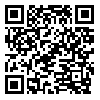BibTeX | RIS | EndNote | Medlars | ProCite | Reference Manager | RefWorks
Send citation to:
URL: http://tumj.tums.ac.ir/article-1-469-en.html
Normal
0
false
false
false
EN-GB
X-NONE
AR-SA
MicrosoftInternetExplorer4
Background: Cancer prevention besides detection and
treatment has a very important role in control of cancer disease. Since some
chemical compounds that are used in laboratories, especially in pathology laboratory are potentially mutagens, lab assistances
that are working with chemicals such as Benzene, Xylazine and Formaldehyde for
long period of time may be exposed to overload of these carcinogens. Therefore,
it is necessary to use an indicator for detecting these occupational exposures.
Ames test
has been recommended in biomonitoring of environment that has high risk
carcinogenicity characteristic.
Methods: A total of fifty seven urine samples of
forensic medicine laboratory personnel's were extracted by C18 column and then tested by TA100 and TA98 standard strains of Ames assay. Each sample was analyzed
with and without activator to detect mutagen and promutagen materials.
Results: Levels of mutagenicity were found by TA98 strain without activator in one case as well as with
activator in two cases of urine samples of pathology laboratory personnel's.
These cases were working in laboratory
for long time in all of the workdays.
Conclusion: Personnel's working in pathology laboratories may
have greater risk of cancer and should be take care from these occupational
exposures.
| Rights and permissions | |
 |
This work is licensed under a Creative Commons Attribution-NonCommercial 4.0 International License. |





